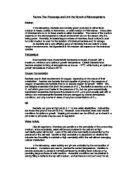Class I biosafety cabinet provide protection for the user by allowing the air to flow inwards. This way the dirt particles that form within the cabinet escape through filtration. However, the work inside the cabinet is not protected from contamination.
Class II biosafety cabinets have the potential of protecting the user, product and the environment through a system that controls the contamination effect of airborne particles and reduces the possibility of the user from being exposed to them.
Class III cabinets provide a totally enclosed working area. The safety cabinet is continuously supplied with filtered air and the exhaust air is drawn to prevent the contamination of samples. Users handle the sample through gloves that are attached to the cabinet.
Another safety equipment is the autoclave machine that conducts decontamination before the disposal of waste in category 2 laboratories. An easily accessible eyewash station is essential along with biohazard warning signs and self-closing lockable doors. The air conditioning system in category 2 laboratories is more efficient than a category 1 lab, as the biohazard level advances to moderate.
Category 3 laboratories are used in working with indigenous agents that are posed to cause serious diseases through inhalation of particles or droplets. Working with these agents are extremely dangerous therefore they are strictly controlled by government agencies. Solid-front wraparound gowns and coveralls produced from material such as respirators are essential PPE. The ventilation system provides directional and controlled air flow through bringing clean air into the lab that has not gone through circulation. When dealing with highly hazardous specimen, the process must be done in a biosafety cabinet.
Overall, the aseptic technique which has been used in the experiments in a category 1 laboratory is not as efficient as the techniques used in category 2 & 3 laboratories because they both include dealing with high biohazard specimen which need to be handled delicately in order to prevent infection from spreading. Whereas, in a category 1 laboratory the agents that were being handled with, were low hazard and therefore the precaution that was taken was to a low standard.
Part 2-
As the experiments that have been carried out were culturing microbes on plates by opening holes on the para-film after sealing the agar plates with them. This is done to allow oxygen to enter the culture and be used in respiration in order to grow to a highest yield possible. However, there are many other techniques that can allow the culturing of microorganisms.
One of them is the ‘shake flaks’ which are essentially used for cultivation of small scale fluid. The culture fluid inside the flasks are shaken continuously hence a high amount of oxygen is transferred into the fluid. This occurs as the liquid surface breaks during the shaking of the flask and therefore there is greater surface area for the transfer of oxygen. Oxygen transfer rates also increase as oxygen bubbles entrain at the surface. However, there are limitations to the rate of oxygen transfer depending on the speed of shaking the flask, the volume of the fluid being cultured and the design of the shaking flask. Oxygen transfer rate increases as the shaking speed increases particularly when baffles are present in the fluids. Baffles form foam due to the entrainment of oxygen at the surface. The liquid volume depends on the volume of the flask, an example could be the presence of maximum 70 ml liquid in a standard 250 ml flask and for larger volumes of liquid, wider based flasks should be used in order to increase the surface area of the liquid to have a higher rate of oxygen transfer.
Secondly, Mechanically Stirred Bioreactors could be used. This culturing technique is especially used for the aeration of liquids which have volumes that are greater than 200 ml. Non-Sparged Bioreactors that are mechanically agitated are capable of supplying a sufficient amount of oxygen for liquid volumes of microbial fermentation maximum 3 litres. A disadvantage of it, is that the stirring speed required may be up to 600 rpm before the oxygen for the culture does not become limited. Oxygen enters the fermenter liquid through the above head-space of the bioreactor and the liquid surface is broken via agitation which occurs continuously to increase the surface area and enables oxygen transfer. Sparged Bioreactors provide effective oxygen transfer for volumes of liquid which are more than 3 litres. As bubbles are introduced with the fluid, the oxygen transfer area increases. Agitation enables to break up bubbles and further increase oxygen transfer. Agitation speeds are significantly lower in sparged fermenters to enable efficient aeration when compared to non-sparged fermenters.
Overall, the two techniques used are more effective in obtaining a higher yield of microorganisms than the plating technique as oxygen is transferred efficiently in order to allow the growth of the desired microorganism.








